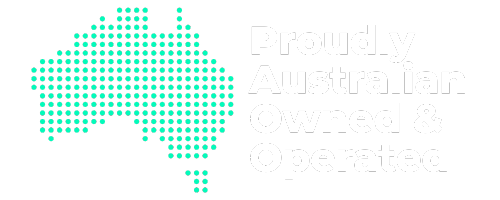The Australian Government released their latest Intergenerational Report, which is a 40-year outlook to the year 2063. While it may seem like a long way off for some people, it’s a report that forecasts slow economic growth, an ageing population, and the effects of climate change hitting the way that we live, work, and play. The good news is that we have time, but it requires action now. So, let’s take a look at it in a bit more detail.
The economy and our ageing population
Over the next forty years, we’ll have the slowest levels of economic growth since WWII due to an ageing population. When Australia’s population hits 40 million, which is about one third on top of where we are today, we’ll see the proportion of people aged over 65 double, while the amount of the population aged 85+ will have tripled. Our ageing population is a result of a declining fertility rate meaning there will be fewer births, along with improvements in healthcare that will see us live longer.
While living longer is by no means a bad thing, the economy is going to have to work harder. There’ll be less working age people, which means fewer taxes coming in to fund critical areas like education, defence, infrastructure and health. The health system in particular will need considerably more funding to be able to support the older population too. So, the government predicts that from 2024 onwards, Australia will be accumulating debt year-on-year, which we know isn’t a sustainable model and why we can expect to see some tax reforms coming sometime down the track.
Jobs and employment
The jobs of the future will be focused on those in-demand areas of health and education, as well as in highly skilled white collar occupations. Even if we look at the next five years, over 90% of new jobs created in Australia will need some kind of post-secondary qualification. Casting our gaze out even further, the number of students going to university will need to double by 2050 to meet future economic needs. It won’t be easy though because the number of people actually finishing high school is falling, so we can expect the government to start shifting its focus from VET education to universities.
A lot of the new jobs that crop up will be driven by technology, like Blockchain Privacy Analysts of Metaverse Property Developers. Even when we look around the world today, The Daily Aus has hired a Chief of Tiktok, while in Japan you can get paid $80 p/h to be a smiling instructor because, well, after wearing masks for so long during COVID, people have apparently forgotten how to smile.
One of the big questions that comes up when talking about jobs of the future is the impact that technology will have on job displacement. The reality is that some jobs will no longer exist, just like typists and switchboard operators aren’t a thing anymore. But the vast majority of jobs will still exist, they’ll just look different than they do today. Whether that’s a more extreme case like a truck driver who no longer sits behind the wheel but operates the vehicle remotely from head office, or less so, an accountant who has some of their data entry automated by a new system.
With an ageing population comes an ageing workforce. And so organisations will need to flip their thinking from looking at it as a risk to an opportunity. Like McDonalds in the US, who did a study and found that the stores with the highest levels of customer satisfaction also had older age demographics, because friendly older workers tend to give better customer service than grumpy teenagers. Go figure. So, McDonalds actually went about looking to actively recruit older workers. It’s this kind of mindset that we’ll need to see more of, as well as the creation of new job roles that better cater to the skills, expertise, expectations, and life stage of this older cohort.
Other considerations
It’s not just about the economy and jobs. Climate change was also a major feature in the Intergenerational Report. There’ll be a big focus around moving towards net zero and carbon neutrality as organisations are increasingly held accountable for their greenhouse gas emissions. But if we keep going the way we are without more aggressive intervention, we will likely see the effects of extreme heat impacting work and life into the future. Recreational activities like sports, as well as some jobs like construction, will need to shift their work patterns to avoid the hottest part of the day. And we’ll also be talking about things like changing core work and school hours to adjust to extreme weather conditions too. When it comes to political issues, we’ll be talking about how Australia can support climate refugees as rising sea levels may see some pacific island neighbouring countries approach the threat of going underwater. It sounds dramatic, but it’s a reality, so do your bit for the environment chums!
We’ll also be spending more and more on defence into the future too. A growing number of geopolitical conflicts mean that we need to increase our own defence investment to up the ante on national security while also providing support to allies and other global causes – Australia has already given almost $1 billion towards the Ukraine effort. The impacts of cyberwarfare and the rise in military technology ain’t cheap either. We’ll see more drones right through to AI-powered fighter jets in the future, and someone’s going to have to pay for them.
The road ahead
These issues only scratch the surface when it comes to what’s ahead. But they represent the main focus for the government when it comes to where it will be spending its time and money. And while it sounds a little bit doom and gloom, it’s important to remember that it gets balanced out with stories of hope and human progress where incredible innovations are already looking to address them. For example, when it comes to artificial intelligence being used in the fight against climate change, where AI-powered robots are being used to sort through materials at recycling centres and helping to increase recycling rates and reduce contamination. When it comes to tracking pollution, AI is able to look at data from sensors and other sources to monitor air and water pollution levels in real-time, as well as identify opportunities for energy savings and waste reduction. AI is also being used to optimise farming practices that improve crop yields, reduce pesticide use and conserve water, while also being deployed to monitor wildlife populations, track migration patterns, and identify threats to help inform conservation efforts.
And when looking across borders, Africa’s technology sector is becoming one of the fastest growing tech ecosystems in the world, with eight startups having already achieved unicorn status with a valuation of USD $1 billion or more.
But what does this mean for me and my business?
Great question. If anything, it highlights the value of future scanning and planning. Forecasting what’s ahead of you, understanding the scenarios you’ll be facing, and understanding both what you need to do to work towards the parts you like while stopping those you don’t from becoming a reality. And we’re not good at it. So many organisations that I talk to admit to being so inwardly focused that they don’t look up and out enough, which is where you can fall behind.
The next time you have a team meeting, share an interesting innovation that you might have come across or a piece of news to do with what’s happening in your broader industry and what it means for your organisation. And remember, at CreativeCubes.Co, we’re always here to help.




